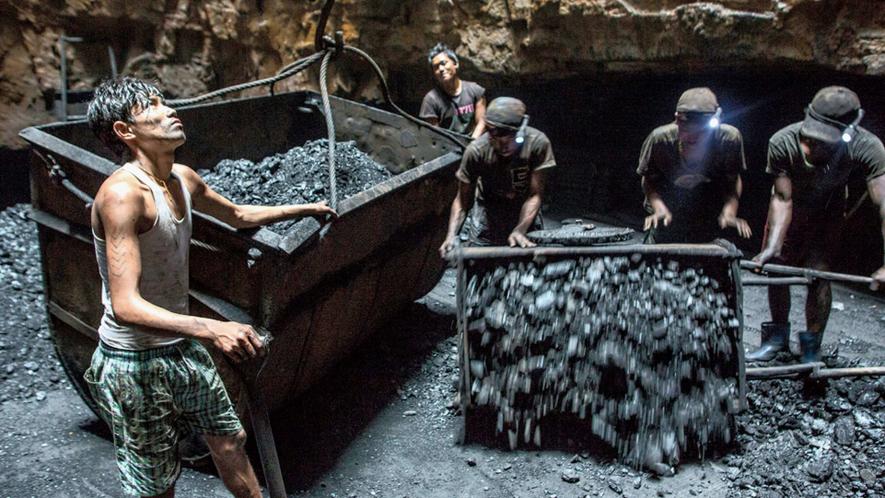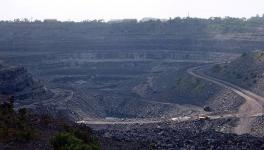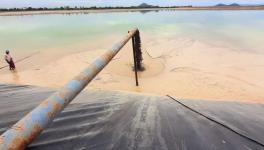Cost of Production: Fifteen More Lives for Meghalaya’s Coal

Image for representational use only; Image Courtesy : The Telegraph
Everybody suspects it, but not many wish to admit that the fifteen miners trapped in the rat-hole mine in Meghalaya are probably dead. If they are alive, it is unlikely that they will be without some debilitating ailment after being trapped in a watery grave for over two weeks. The mobilisation of the National Disaster Response Force (NDRF), Navy divers and the Air Force for transport has certainly come too late. The lackadaisical attitude of both the Union as well as the state government should be brought into question. However, if one were to consider the identities of the miners, sadly, this attitude becomes self-explanatory.
Who Mines in Meghalaya?
Mining is a risky business. There is always the possibility of workplace accidents, not to mention airborne particles settling inside one’s lungs. Thus, as is the practice in most parts of the world, mining is undertaken by the desperate. The desperate in the case of Meghalaya are invariably the poor and the migrants, whether Indian citizens or otherwise.
Last year at a construction site in Sikkim, one of the workers narrated a story of how he had worked in the mines in Meghalaya. Since he came from Gorubathan, located in the hills in North Bengal, close to Bhutan, he needed to earn from a young age. According to him, the money was good, but whenever he wanted to leave he was informed that he had to ask the supervisor’s dao (machete) for permission.
Also Read | ‘Attempts to Save Meghalaya Miners Only a Face Saving Move’
In the present instance, the trapped miners are unlikely to be locals. The lone survivor, Sayeb Ali who managed to escape before getting trapped is in all likelihood from neighbouring Assam. Numerous articles have also noted a predominance of undocumented workers from Bangladesh and Nepal in such mines.
The National Green Tribunal (NGT) Order of April 17, 2014, which banned ‘unscientific coal mining’ in Meghalaya has often been cited to point out that the mine is technically illegal. However, another Order on October 7, 2014, by the NGT took notice of the impact that rat-hole mining has on the workers.
Also Read | Still No Trace of 13 Trapped Miners From Meghalaya
Paragraph 13 of the Order referred to an incident on July 6, 2012, when 15 persons were fatally trapped inside a mine. Elaborating on this aspect the NGT noted;
“Though better working conditions in mining may not be strictly a subject of the Tribunal but it needs to be dealt with by the Tribunal as the Government has an obligation to provide humane working conditions, safety gadgets, proper remuneration and such other facilities so that workers engaged in the mines as well as in the transportation of the coal are not forced to work in the conditions which are bound to expose them to chronic diseases and make them susceptible to fall as victims on recurrence of such event. The young boys, who are expected to be studying in the schools at the tender age of 12 /13 years are not expected to be working in rat-hole mine.”
Underground Cottage Industry
Due to the operation of Schedule VI of the Constitution in most of Meghalaya, as well as the traditional land-owning patterns, unless leased, land is entirely owned by locals. This land falls into two categories Ri Raid (community-owned land) and Ri Kynti (clan-owned land). However, due to a push towards nuclear families and possibly a capitalist, consumer-oriented society, traditional land holding has given way towards private ownership.
During the 19th century, coal was mined in Meghalaya, much as it is now, through box mines and rat-holes. This was done at a local scale and used for heating or cooking. However, everything changed in the early 1970s when steel and chemical industries began operating near Guwahati. Coal mining became a more lucrative affair. Despite the commercial viability of mining, the state government chose a hands off approach. Therefore, worker safety and even child labour regulations have not been strictly enforced.
Also Read | Meghalaya RTI Activist Attacked for Looking into Illegal Coal Mining, Condition Critical
A low cost of production based on rudimentary equipment as well as cheap labour in terms of a largely migrant workforce has led to the high profitability of mining. It is no surprise that despite the NGT’s Order in April, 2014, banning all mining in Meghalaya is going to be near impossible until the government comes up with a proper plan. At the time, the mine owners lobbied aggressively portraying coal mining as a ‘cottage industry’ and appealed to the NGT to let them sell their ‘already mined coal’. This category of ‘already mined coal’ has in fact led to the current crisis.
The next NGT Order in October, 2014, took note of the report submitted by a committee constituted by the tribunal and stated;
“A large number of coal owners have made false declarations without having any commensurate coal stock. Some mine owners have grossly over declared their stock. These can only be attributed to malafide intent to mine coal despite the interim ban or illegal disposal of the coal after the declaration but before the assessment. These cases need to be examined and penalised.”
The Order directly quoted the committee report stating;
“past experience shows that several illegal/unauthorised check gates operate whenever there is movement of coal trucks. The DGP at the State level and the DMs and SPs at the district level will ensure through regular inspections and monitoring that such illegal check gates, wherever existing, are immediately dismantled and no such illegal check gates operate to ensure proper movement of the coal trucks”.
The NGT also mentioned the comments of the Amicus Curiae in the matter that “a large number of coal which was stated to have been declared by the coal miners, in fact upon inspection, was found to be NIL. Such wrong declarations were made to the extent of lakh tonnes of coal.”
Also Read | Khasi Students Union Opposes UCIL's Uranium Mining Ambitions
These observations of the NGT foretold the future of Meghalaya’s coal industry. Both the previous Mukul Sangma-led Congress government as well as the current Conrad Sangma-led National People’s Party led government have vocally pushed for mining to resume. As pointed out by Gene Hashmi in an article in Raiot, Mukul Sangma, when making his case to the Union Government following the NGT ban, forgot to mention that his wife is a mine owner. Another advocate for resuming the coal mining operations is Congress Lok Sabha member, Vincent H Pala. Incidentally, Pala has not shied away from his status as a mine owner. In his 2014 election affidavit, he has mentioned that he owns 30 mines in the Jaintia Hills, with a stock of 2,000 tonnes of coal.
Hashmi also pointed out the strange coincidences regarding attacks on activists following the National People’s Party-led Meghalaya Democratic Alliance forming the government. He drew comparisons between the death of Poipynhun Majaw and the attack on Agnes Kharshiing and Anita Sangma. Majaw was a Right to Information (RTI) activist who was bludgeoned to death. The motive is rumoured to be his RTI activism related to limestone quarrying. On April 17, Patricia Mukhim, the editor of the Shillong Times had a petrol bomb thrown at her residence. Though little is known about the motive, Mukhim has been critical of the coal mining practice in Meghalaya. On November 8, RTI activists, Agnes Kharshiing and Anita Sangma were attacked while they took pictures of coal-laden trucks. Incidentally, one of the prime accused in the attack on Kharshiing and Sangma is Nidamon Chullet, a NPP leader who surrendered to the police on December 28.
What is common is that the attacked people were not only critical of the coal mining policy in the state, but were also actively working towards unearthing the scam being played out by labelling all the coal leaving Meghalaya as ‘already mined’. This is the grey area where, as long as one does not get caught, mining can continue and coal can be exported.
Get the latest reports & analysis with people's perspective on Protests, movements & deep analytical videos, discussions of the current affairs in your Telegram app. Subscribe to NewsClick's Telegram channel & get Real-Time updates on stories, as they get published on our website.
























